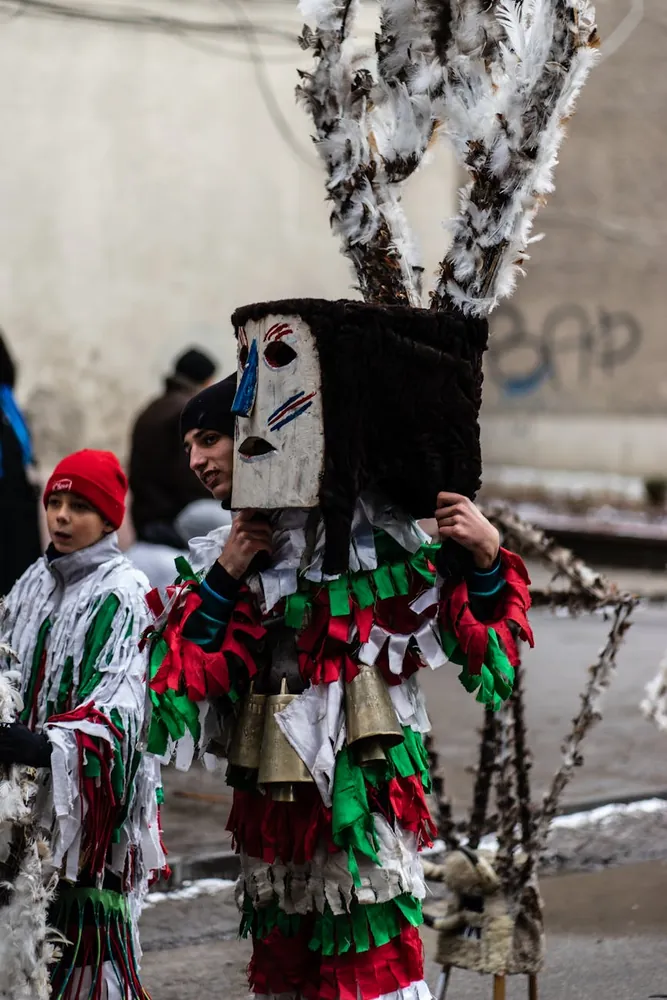Discovering Unique Festivals and Traditions in Eastern European Backroads

The Allure of Eastern Europe's Hidden Gems
When one thinks of Eastern Europe, bustling cities like Prague, Budapest, and Kraków often come to mind. However, hidden in the rural backroads of this culturally rich region are quaint villages that host unique festivals and traditions. These lesser-known cultural sites offer immersive experiences into local customs that are often overlooked by mainstream tourism.
From vibrant celebrations of heritage to age-old culinary delights, each village tells a story of its own. In this article, we will uncover some of these remarkable locales and provide insights into their distinct traditions, allowing you to travel beyond the typical tourist paths.
Exploring Quaint Villages and Their Traditions
Kolomyia, Ukraine: The Pysanka Museum
Nestled in the heart of Ukraine's Carpathian region, Kolomyia is a small town with a big claim to fame – it's home to the Pysanka Museum. Dedicated entirely to the art of pysanky (traditional Ukrainian Easter eggs), this museum is an icon of cultural preservation. Each egg is intricately decorated using wax-resist methods, showcasing symbols and patterns steeped in folklore.
Visitors can partake in workshops where local artisans guide them through the process of creating their own pysanky. The museum itself is shaped like a giant egg, making it a distinctive landmark and a symbol of the town's rich heritage.
Razhka, Bulgaria: Kukeri Festival
Every winter, the small village of Razhka bursts into life with the Kukeri Festival. This ancient ritual, aimed at warding off evil spirits and ensuring a bountiful harvest, features men dressed in elaborate costumes made from fur and adorned with bells.
The festival is a sensory extravaganza; the sound of clanging bells fills the air as participants dance through the streets. The masks worn by the Kukeri are strikingly detailed, often depicting mythical creatures or animals. This event offers travelers a captivating glimpse into Bulgaria's pagan past.
Hollókő, Hungary: Easter Celebrations
A UNESCO World Heritage site, Hollókő is a living museum where traditions are very much alive. During Easter, this picturesque village hosts celebrations that bring history to life. Women don traditional attire and engage in 'locsolkodás', a playful tradition where men sprinkle women with water, symbolizing purification and fertility.
The cobblestone streets are lined with stalls selling handmade crafts and pastries, allowing visitors to indulge in authentic Hungarian cuisine while soaking up the vibrant atmosphere.
Savoring Authentic Cuisine
Zakopane, Poland: Oscypek Cheese
In the Tatra mountains lies Zakopane, a town renowned for its distinct highlander culture and culinary delights. One such delicacy is oscypek, a smoked sheep cheese that's a staple at local markets and festivals.
Artisanal cheese makers welcome visitors to their huts where they can witness the cheese being made using traditional methods. Tasting fresh oscypek paired with cranberry sauce is a must for any culinary enthusiast exploring Poland's rich flavors.
Sibiu, Romania: Cabbage Festival
The annual Cabbage Festival in Sibiu showcases Romania's agricultural heritage through food, music, and dance. This event celebrates the humble cabbage with creative dishes ranging from sarmale (cabbage rolls) to cabbage pies.
The festival also features cooking competitions where locals display their skills, providing an opportunity for visitors to taste an array of cabbage-based delights. It's a testament to how simple ingredients can be transformed into culinary masterpieces.
Practical Tips for Exploring Eastern European Backroads
- Research Ahead: Before your trip, learn about the festivals and traditions specific to the region you’re visiting. Websites dedicated to cultural events can provide dates and details.
- Local Guides: Hiring a local guide can enhance your experience by offering deeper insights into the customs and history of the area.
- Language Basics: While many locals may speak English, learning a few phrases in the local language can go a long way in building rapport and showing respect for the culture.
- Flexible Itineraries: Allow room for spontaneity. Some of the best experiences can come from unplanned detours.
The Rich Heritage of Eastern European Festivals
The beauty of exploring Eastern Europe's backroads lies in the authentic connections formed with local communities and their traditions. Whether it's dancing with masked men in Bulgaria or creating colorful eggs in Ukraine, these experiences offer a deeper understanding of the region's history and way of life.
By venturing off the beaten path, travelers can not only witness but actively participate in preserving these age-old customs. Each festival and tradition adds another layer to Eastern Europe's vibrant tapestry, making it an ideal destination for those seeking unique cultural immersion.
 BuzzArticle
BuzzArticle